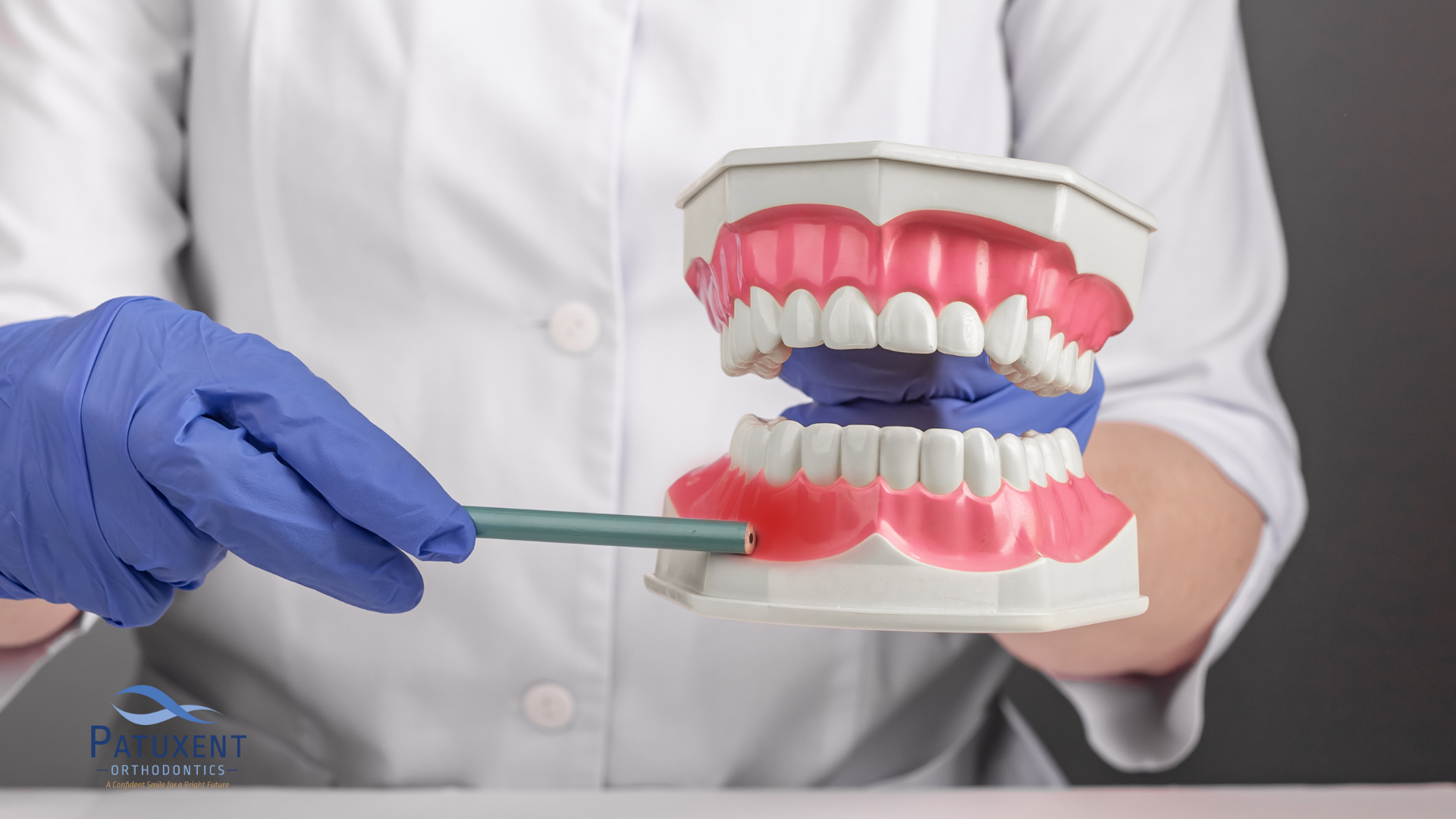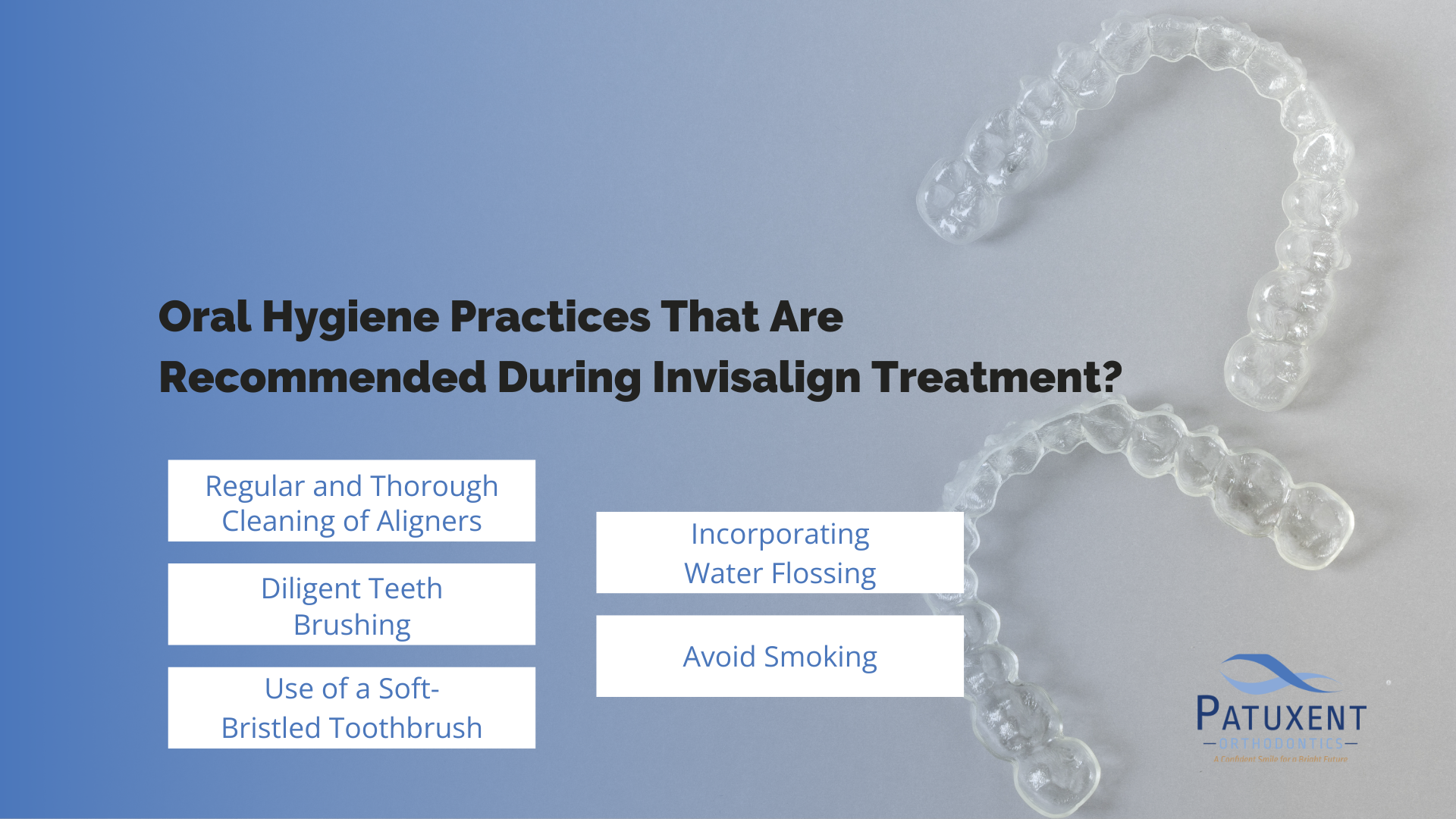Invisalign, known for its aesthetic appeal and convenience, has revolutionized how we approach teeth straightening.
But with every innovation comes questions and concerns. One such problem that often bubbles up is gum health. Can these discreet aligners lead to gum recession?
Understanding the impact of Invisalign on your gums is essential for your oral health and maintaining your confident, beautiful smile. It’s time to brush away myths and focus on what matters—the ins and outs of Invisalign and its relationship with gum health.

Are Gum Disease and Gum Recession the Same?
While often mentioned together, gum disease and gum recession are different.
Gum disease, or periodontal disease, is a bacterial infection that affects the soft tissue and, if left untreated, can destroy the bone that supports your teeth. Symptoms like mild gum bleeding, swelling, and redness commonly mark it.
Gum recession, on the other hand, involves the pulling back or wearing away the gum tissue from the tooth, exposing the roots. This condition can result from advanced gum disease but can also occur independently due to factors like aggressive brushing or poor dental hygiene.
Are Certain Patients More at Risk of Gum Recession?
Yes, certain factors can increase the risk of gum recession in patients. Individuals with a history of periodontal disease are more susceptible, as the disease weakens the gums, making them more prone to recede.
Other risk factors include aggressive brushing with stiff bristles, leading to the erosion of gum tissue, and misaligned teeth, which create uneven pressure on the gums and teeth.
Those with poor oral hygiene are at a higher risk since plaque accumulation can trigger gum disease, eventually leading to recession. Habits like smoking can exacerbate gum problems, causing further damage.
Invisalign clear aligners may improve gum tissue movement, especially when complemented with good oral hygiene and proper use.
What Are the Risks of Gum Recession?
Gum recession comes with several risks that can impact oral health significantly.
Exposed tooth roots due to receding gums can lead to tooth sensitivity, especially to hot or cold temperatures. This exposure also increases the risk of tooth decay and bacterial infection in the areas where the gums have receded.
In severe cases, gum recession can result in loose teeth and eventually lead to tooth loss. It can also affect the smile’s aesthetic appearance, causing self-consciousness in some patients.
Receding gums can also make the mouth surface more vulnerable to injury and abrasion as the protective gum line is diminished.
Individuals with gum recession must maintain a regimen of good oral hygiene and regular check-ups, and interventions like deep cleaning (scaling and root planing) or gum grafting must be considered to manage and treat the condition effectively and prevent further recession.
What Are the Signs of Gum Recession?

Gum recession is gradual, but several signs can indicate its onset or progression. Being aware of these signs is crucial for early intervention and preventing further damage:
- Visible Changes in the Gum Line: One of the most obvious signs is a noticeable change in your gum line. You might see your gums receding, making your teeth appear longer.
- Tooth Sensitivity: As gums recede, they expose the roots of your teeth, which can lead to increased sensitivity, especially to hot or cold temperatures. This sensitivity is often one of the first signs noticed by many patients.
- Mild Gum Bleeding: In cases where gum recession is linked to gum disease, you might experience mild gum bleeding during brushing or flossing.
- Gum Discomfort or Pain: Receding gums can sometimes feel tender or sore, mainly when you eat certain foods or brush your teeth.
- Loose Teeth: In more advanced stages, the gums recede far enough to weaken the support for your teeth, potentially leading to loose teeth.
- Deep Pockets between Teeth and Gums: Receding gums can create deeper spaces between your teeth and gum line, where food debris can accumulate, worsening the condition.
- Tooth Roots Becoming Visible: As the gums recede further, the roots of the teeth may become exposed, visible to the naked eye, and more prone to decay.
Does Invisalign Treatment Affect Gum Health?
Invisalign treatment is a popular orthodontic method for straightening teeth. While it has many advantages, such as improved aesthetics and comfort compared to traditional metal braces, its impact on gum health is a topic of interest.
Invisalign typically improves gum health by properly aligning and fixing crowded teeth.
Generally, Invisalign does not directly cause gum recession but requires diligent oral hygiene, like any orthodontic treatment.
Invisalign clear aligners are generally safe. If you are already experiencing gum recession, it’s essential to consult with our dental professionals. We can assess whether you are a candidate for treatments like Invisalign.
How Can You Prevent Gum Recession while Using Invisalign?
Preventing gum recession during Invisalign treatment involves maintaining good oral hygiene and being attentive to the health of your gums and teeth.
Since Invisalign trays cover the teeth and gums, they can trap food debris and plaque against the mouth surface, increasing the risk of gum disease if not cleaned properly.
Regular and thorough cleaning of both the teeth and aligners is essential. A soft-bristled toothbrush and gentle brushing techniques can help minimize any potential gum damage.
It’s important to avoid habits that can contribute to gum recession, such as aggressive brushing or smoking.
What Are the Long-Term Effects of Invisalign on Gum Health?
Over the long term, Invisalign can contribute positively to gum health, mainly if the treatment resolves issues like crowding or misaligned teeth, which often make oral hygiene difficult.
By aligning the teeth properly, Invisalign can make it easier to maintain good oral health, reducing the risks of periodontal disease and gum recession.
Patients must continue good oral hygiene practices throughout and after treatment to ensure the health of their gums.
Neglecting oral care during Invisalign treatment can lead to plaque accumulation and gum issues. Still, proper care significantly reduces these risks, promoting healthy gums and a healthier mouth overall.
What Should You Do if You Notice Gum Recession during Invisalign Treatment?
If you notice signs of gum recession, such as receding gum lines or increased tooth sensitivity, during Invisalign treatment, you must consult with your orthodontist immediately.
They can assess whether the recession is related to the Invisalign aligners, an underlying condition, or other factors like oral hygiene habits. In some cases, pausing or adjusting the treatment may be necessary.
You may need treatments to address the gum recession, such as deep cleaning or gum grafting.
Continually monitoring your gum health throughout the Invisalign treatment and promptly addressing any issues can help prevent further recession and ensure the long-term health of your gums and teeth.
What Oral Hygiene Practices Are Recommended during Invisalign Treatment?

Maintaining optimal oral hygiene during Invisalign treatment is essential, not only to ensure the effectiveness of the treatment but also to prevent issues like gum recession, gum disease, and tooth decay. Here are some recommended practices:
- Regular and Thorough Cleaning of Aligners: Invisalign clear aligners should be cleaned regularly. This prevents food debris and bacteria buildup on the aligners and your teeth. Rinsing the aligners every time you remove them and brushing them gently with a soft toothbrush ensures they remain clean and hygienic.
- Diligent Teeth Brushing: Brush your teeth at least twice a day, ideally after every meal, especially before reinserting your aligners. This reduces the chance of trapping food particles and bacteria between your teeth and the aligners, which can lead to plaque accumulation and gum issues.
- Use of a Soft-Bristled Toothbrush: A soft-bristled toothbrush is gentle on both the teeth and gums. This is important as aggressive brushing with stiff bristles can cause gum damage and potentially worsen gum recession.
- Incorporating Water Flossing: Water flossing is an effective way to clean between teeth and along the gum line, areas that might be more challenging to reach with traditional floss. This method is especially beneficial for Invisalign users, as it helps remove trapped food particles and reduces gum disease and recession risk.
- Avoid Smoking: Smoking exacerbates oral health problems, leading to gum disease and recession. Quitting smoking benefits your oral health and the success of your Invisalign treatment.
Following these practices helps to maintain good oral hygiene, prevent gum disease, and avoid complications such as gum recession while undergoing Invisalign treatment.

Get the Smile You Deserve in Hollywood, MD!
Contact Patuxent Orthodontics if clear retainers are the solution to your dental woes. Whether you want to learn more about the benefits of orthodontic care or have questions about the process, use our live chat, call (240) 802-7217, or message us through our Contact Us page to connect with our friendly staff today and book a complimentary consultation!
Our office, located at 44220 Airport View Dr., Hollywood, MD 20636, proudly serves Maryland’s Patuxent area, as well as the Greater Washington DC area. So, if you’re residing in Hollywood, Wildewood, or Leonardtown and are looking for one of the best orthodontists in Maryland, don’t hesitate to visit our office!
We also invite you to keep up with our blog to get answers to many of the frequently asked questions about maintaining your perfect smile, and follow us on Facebook and Instagram to become a part of our smiling community!











